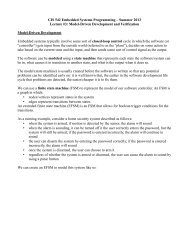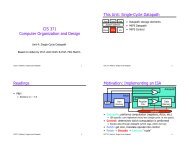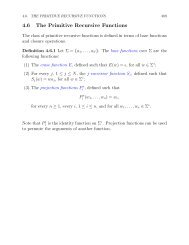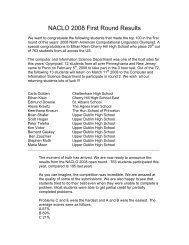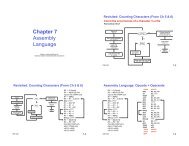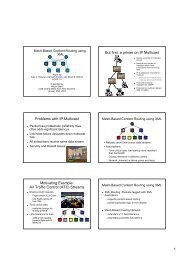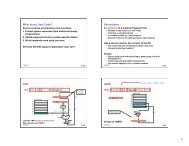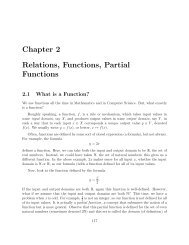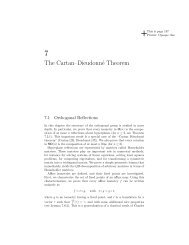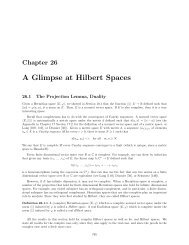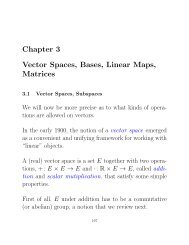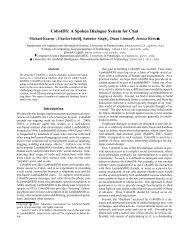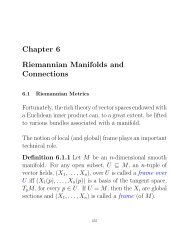Chapter 3 Context-Free Grammars, Context-Free Languages, Parse ...
Chapter 3 Context-Free Grammars, Context-Free Languages, Parse ...
Chapter 3 Context-Free Grammars, Context-Free Languages, Parse ...
Create successful ePaper yourself
Turn your PDF publications into a flip-book with our unique Google optimized e-Paper software.
34 CHAPTER 3. CONTEXT-FREE GRAMMARS AND LANGUAGES<br />
Remark: <strong>Context</strong>-free grammars are sometimes defined as G = (VN,VT ,P,S). The<br />
correspondence with our definition is that Σ = VT and N = VN, sothatV = VN ∪ VT .Thus,<br />
in this other definition, it is necessary to assume that VT ∩ VN = ∅.<br />
Example 1. G1 =({E,a,b}, {a, b},P,E), where P is the set of rules<br />
E −→ aEb,<br />
E −→ ab.<br />
As we will see shortly, this grammar generates the language L1 = {a n b n | n ≥ 1}, which<br />
is not regular.<br />
Example 2. G2 =({E,+, ∗, (, ),a}, {+, ∗, (, ),a},P,E), where P is the set of rules<br />
E −→ E + E,<br />
E −→ E ∗ E,<br />
E −→ (E),<br />
E −→ a.<br />
This grammar generates a set of arithmetic expressions.<br />
3.2 Derivations and <strong>Context</strong>-<strong>Free</strong> <strong>Languages</strong><br />
The productions of a grammar are used to derive strings. In this process, the productions<br />
are used as rewrite rules. Formally, we define the derivation relation associated with a<br />
context-free grammar. First, let us review the concepts of transitive closure and reflexive<br />
and transitive closure of a binary relation.<br />
Given a set A, abinary relation R on A is any set of ordered pairs, i.e. R ⊆ A × A. For<br />
short, instead of binary relation, we often simply say relation. Given any two relations R, S<br />
on A, theircomposition R ◦ S is defined as<br />
R ◦ S = {(x, y) ∈ A × A |∃z ∈ A, (x, z) ∈ R and (z, y) ∈ S}.<br />
The identity relation IA on A is the relation IA defined such that<br />
For short, we often denote IA as I. Notethat<br />
IA = {(x, x) | x ∈ A}.<br />
R ◦ I = I ◦ R = R<br />
for every relation R on A. Given a relation R on A, for any n ≥ 0 we define R n as follows:<br />
R 0 = I,<br />
R n+1 = R n ◦ R.



